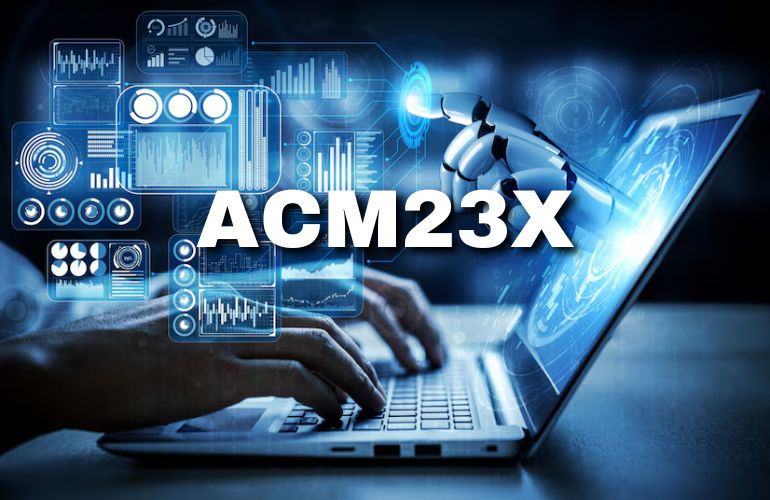tech
EV Charging: Powering the Future of Transportation

In the ever-changing transportation scene, electric vehicles (EVs) have shown great promise in lowering carbon emissions and reducing reliance on fossil fuels. The infrastructure required for EV charging is essential to the general adoption of electric vehicles. By recharging the vehicle’s battery with electric energy, EV charging allows drivers to comfortably cover longer distances.
EV Charger Types
Level 1 Chargers
Generally using a regular 120-volt household outlet, Level 1 chargers are the most basic type. Although they are useful for providing a continuous charge over night, their modest speed makes them more appropriate for one-time use or emergencies.
Chargers with Level 2
In comparison to Level 1 chargers, Level 2 chargers have faster charging times and run at 240 volts. They offer a practical answer for regular charging demands and are frequently seen in household settings and public charging stations.
DC Quick Chargers
The fastest charging speeds are provided by DC Fast Chargers, sometimes referred to as Level 3 chargers; these chargers are perfect for long-haul trips and commercial fleets. In a handful of minutes, these chargers can restore a sizable amount of an EV’s battery capacity.
Infrastructure for Charging
Both public and private charging stations make up the infrastructure for EV charging.
Charging stations available to the public
Parking lots, shopping malls, and highways are just a few of the locations where public charging stations are positioned strategically to provide EV owners with easy access to charging while they are out and about. In order to handle different types of EVs, these stations frequently offer varied charging levels.
Charge Stations for Homes
EV drivers may conveniently charge their cars overnight while they are at home thanks to home charging stations. They are simple to install in driveways or garages for homes, making hassle-free charging possible without requiring frequent trips to external charging stations.
Benefits of EV Charging
Environmental Benefits
EV charging significantly reduces greenhouse gas emissions compared to traditional gasoline-powered vehicles, contributing to cleaner air and a healthier environment.
Cost Savings
Switching to electric vehicles can lead to substantial cost savings over time, as electricity is generally cheaper than gasoline, and EVs require less maintenance due to fewer moving parts.
Convenience
With the growing network of charging stations and advancements in charging technology, EV owners can enjoy the convenience of reliable charging options wherever they go, eliminating the need to rely solely on gasoline-powered vehicles.
Challenges of EV Charging
Range Anxiety
Range anxiety, the fear of running out of battery power before reaching a charging station, remains a concern for some EV owners, particularly those with longer commutes or in areas with limited charging infrastructure.
Charging Time
Although EV charging times have significantly improved with advancements in technology, some drivers may still find the charging process to be time-consuming, especially when using slower Level 1 or Level 2 chargers.
Infrastructure Availability
In certain regions, the availability of charging infrastructure may be limited, posing a challenge for EV owners who rely on public charging stations for their charging needs.
Future of EV Charging
The future of EV charging is promising, with ongoing advancements in technology and infrastructure.
Technological Advancements
Innovations in battery technology and charging infrastructure continue to improve charging speeds and efficiency, making EVs an even more attractive option for consumers.
Expansion of Charging Networks
Governments, businesses, and utilities are investing in the expansion of charging networks, increasing accessibility and convenience for EV owners and further accelerating the transition to electric transportation.
Conclusion
EV charging plays a vital role in the widespread adoption of electric vehicles, offering environmental benefits, cost savings, and convenience to consumers. While challenges such as range anxiety and infrastructure availability persist, ongoing advancements in technology and infrastructure are driving the future of EV charging toward a cleaner, more sustainable transportation ecosystem.
FAQs
- How long does it take to charge an electric car?
Charging times vary depending on the type of charger and the vehicle’s battery capacity. Level 1 chargers may take several hours, while DC Fast Chargers can provide a significant charge in minutes. - Can I install a home charging station myself?
While it’s possible for some homeowners to install a home charging station themselves, it’s recommended to consult a qualified electrician to ensure proper installation and compliance with safety regulations. - Are all electric cars compatible with all types of chargers?
No, not all electric cars are compatible with all types of chargers. It’s essential for EV owners to check their vehicle’s specifications and charging capabilities to determine compatibility with different charging stations. - Is it expensive to charge an electric car at home?
The cost of chargings an electric car at home depends on factors such as electricity rates and the vehicle’s battery capacity. In general, chargings an EV at home is cheaper than refueling a gasoline-powered vehicle. - How often do I need to charge an electric car?
The frequency of chargings depends on factors such as driving habits, distance traveled, and the vehicle’s battery capacity. EV owners typically charge their vehicles overnight at home or as needed at public chargings stations.
tech
ACM23X: Unlocking Innovation and Revolutionizing Industries

In today’s rapidly evolving technological scene, ACM23X is a game-changer that is transforming the way businesses and industries operate. It is the outcome of years of development and investigation into the use of technology and data to foster growth, innovation, and productivity. ACM23X is a tribute to human ingenuity with its insight into the future of disruptive technology and enterprise solutions.
Recognising ACM23X
ACM23X is a comprehensive ecosystem designed to streamline operations, improve workflows, and give decision-makers relevant data. It goes beyond a simple software platform. Essentially, it sorts through massive volumes of data using complex algorithms, machine learning techniques, and predictive analytics to provide meaningful information and encourage deliberate decision-making. The process it went through to become a reality shows how, in the digital age, creativity and the pursuit of excellence never stops.
Crucial Elements of ACM23X
Its main feature is that it has a lot of functions that are intended to meet the various demands of contemporary enterprises. It offers a convenient user experience with its strong data analysis tools and easy-to-use interface. The modular model promotes agility and adaptability, enabling businesses to change and grow in response to changing market conditions. It is outfitted with several security mechanisms to safeguard confidential data and uphold compliance with industry standards.
ACM23X Application Forms
ACM23X is used in many industries, such as finance, manufacturing, healthcare, and transportation. It provides predictive maintenance for production, lowering downtime and increasing equipment uptime. ACM23X uses data-driven insights to deliver individualised patient care in the healthcare industry. It enhances the outcomes of treatment. It enhances risk management in finance and fraud detection, thereby shielding businesses from monetary damages. These are just a few instances of how ACM23X is promoting general innovation and transforming several industries.
The Operation of ACM23X
Fundamentally, ACM23X gathers data from various sources, processes it instantly, and generates significant insights that shape choices. With the help of its powerful algorithms, which assess designs, trends, and anomalies, businesses are able to control risks and forecast possibilities. Moreover, it continuously refines its models and algorithms through machine learning techniques, leading to optimal performance in dynamic scenarios. Because of its modular nature, it can integrate with existing systems with ease, minimising interruption and maximising value.
Benefits of ACM23X
ACM23X offers a multitude of advantages that provide businesses with a competitive edge in the hectic business world of today. Through the computerization of repetitive tasks, the streamlining of workflows, and the more efficient allocation of resources, it advances operational efficiency and reduces costs. Its predictive analytics abilities assist businesses in anticipating market developments and customer preferences, guiding making important choices and promoting expansion. Additionally, it fosters innovation by giving staff members data-driven insights, which stimulate originality and cross-team collaboration.
ACM23X’s Prospects in the Future
Future prospects for ACM23X appear promising, as adoption and advancement will be fueled by ongoing developments in artificial intelligence, machine learning, and information analytics. Digital transformation will become increasingly important in determining the global industries of the future as more initiatives embrace it. It will drive future advancements, ushering in a new era of networks, efficiency, and sustainability, from self-driving vehicles to smart cities.
Problems and Solutions
ACM23X has several challenges despite its clear benefits, including as interoperability problems, security holes, and data privacy difficulties. These challenges are not insurmountable, though, and efforts are being undertaken to get over them. In an effort to prevent data breaches and cyberattacks, organisations are investing heavily in cybersecurity measures. Furthermore, industry best practices and benchmarks are being developed to ensure compatibility and interoperability with existing systems. It will grow and flourish in the upcoming years if these challenges are met head-on.
ACM23X’s effects
It has a huge impact on many industries, bringing about revolutionary changes and altering the nature of markets. It provides predictive maintenance for production, which lowers downtime and increases productivity. By adopting customised treatment plans and acting early, it enhances patient outcomes in the medical field. It enhances fraud detection and risk management in the financial sector. thereby shielding businesses from monetary damages. ACM23X stimulates innovation across a wide range of fields, boosting output, growth, and efficiency.
Combining Digital Transformation with Integration
ACM23X is crucial to modernization efforts when businesses embark on digital transformation projects. Its steady integration with other cutting-edge innovations, like as blockchain, the Internet of Things, and artificial intelligence, enables companies to take advantage of contemporary opportunities and create value. Whether it’s improving customer experiences or optimising supply chain operations, it combines with other innovations to create development and advancement.
The State of the Market and Major Players
Leading rivals in the competitive market landscape fight for supremacy in the ACM23X arena by offering a wide range of services and solutions to meet the evolving needs of customers. With both vibrant startups and well-established industry titans, the market is ready for growth and rivalry. A market’s ever-changing environment is influenced by factors including partnerships, mergers and acquisitions, and regulatory changes, all of which encourage consolidation and progress.
Regulatory Aspects to Take into Account
As it becomes more popular, regulatory issues surface that require adherence to data protection laws and industry standards. To utilise technology properly, organisations have to navigate a complex web of legal requirements and regulatory systems. By adhering to best practices and staying current with administrative changes, organisations may lower risks and provide clarity with partners and clients.
Education and Training in ACM23X
The need for qualified specialists who can install and maintain it will grow as it is used more frequently. Programmes for education and training are essential for equipping individuals with the knowledge and skills needed to effectively use its capabilities. Companies are funding educational initiatives to narrow the skills gap and prepare the workforce of the future, which range from virtual classes to practical seminars.
Conclusion
Lastly, ACM23X signifies a fundamental change in the way businesses use technology to spur innovation and accomplish strategic goals. ACM23X is destined to change the face of business globally thanks to its disruptive potential, broad range of applications, and dominant capabilities. By utilising data and technology, businesses may create value, boost production, and expose contemporary opportunities in today’s sophisticated market.
FAQs
Which industry will profit from ACM23X?
ACM23X offers a wide range of applications, including manufacturing, healthcare, finance, and transportation.
How could ACM23X increase operational efficiency?
ACM23X streamlines workflows, automates activities, and provides real-time insights, increasing efficiency and productivity.
Does ACM23X work with existing infrastructure?
Yes, ACM23X has a modular architecture that enables smooth integration with current systems and infrastructure.
What are the main issues related with ACM23X?
Security concerns, interoperability limitations, and data privacy rules all provide challenges.
What is the future outlook for ACM23X?
The future of ACM23X seems promising, with continued advances in AI, IoT, and data analytics driving innovation and acceptance.
tech
XATPES: Revolutionizing Connectivity and Efficiency

The need for more rapid, dependable, and efficient connectivity is growing in today’s fast-paced world. The networking environment is changing dramatically with the introduction of innovative technologies like XATPES. In this piece, we examine the complexities of XATPES technology, including its operation, applications in several fields, benefits, drawbacks, and potential.
Comprehending XATPES Technology
XATPES: What is it?
Xtended Adaptive Transmission Power Efficient System, or XATPES for short, is a cutting-edge technology that enhances wireless networks. In contrast to conventional systems that function at constant power levels, XATPES dynamically modifies transmission power in response to environmental factors, traffic load, and network circumstances. This adaptive strategy improves overall network throughput and reliability by ensuring peak performance and energy efficiency.
In order to optimise signal quality and coverage, reduce interference, and minimise energy consumption, XATPES uses sophisticated algorithms and machine learning techniques to continuously monitor and analyse network parameters in real-time. This dynamic optimisation process allows for seamless connectivity and an improved user experience across a variety of wireless environments. Applications of XATPES XATPES technology finds applications across a wide range of industries, revolutionising connectivity and efficiency in various domains.
Applications of XATPES
XATPES technology finds applications across a wide range of industries, revolutionizing connectivity and efficiency in various domains.
XATPES in Medical Fields
XATPES is essential to the healthcare industry since it enables remote patient monitoring systems, telemedicine services, and wireless medical devices. XATPES enables seamless data transmission between medical professionals and patients, boosting the standard of care and improving patient outcomes by guaranteeing dependable and secure communication channels.
Transportation with XATPES
XATPES technology provides improved connectivity in cars, trains, and infrastructure systems, which improves the transportation sector. XATPES enhances network performance to control traffic in real-time, facilitates communication between vehicles, and offers passenger Wi-Fi services, all of which contribute to safe and effective transportation operations.
XATPES in the Field of Telecoms
XATPES is used by telecom companies to improve the performance and dependability of wireless networks, including 5G and beyond. XATPES provides seamless connectivity for voice, data, and multimedia services while optimising spectrum efficiency and lowering latency by dynamically adjusting to changing network conditions and user needs.
Benefits of XATPES Technology
There are numerous advantages that XATPES technology provides for customers, businesses, and society at large.
Enhancements in Efficiency
XATPES maximises data throughput and minimises latency while enhancing network efficiency by optimising transmission power and spectrum resources. Improved network performance, faster download speeds, and smoother streaming are all results of this increased efficiency.
Savings on Costs
Because XATPES is adaptive, network operators and service providers can save a lot of money by not requiring as much infrastructure or electricity. Through the reduction of capital investments and operating expenses, XATPES makes wireless network deployment and management more economically viable.
Advantages for the Environment
By emphasising resource optimisation and energy efficiency, XATPES lessens the environmental effect and carbon emissions related to wireless communications. XATPES makes a positive contribution to a future that is more environmentally friendly and sustainable by reducing energy use and optimising network resources.
Obstacles and Restrictions
Though XATPES technology has many benefits, there are several issues and restrictions that need to be taken into consideration.
Technical Difficulties
Sophisticated algorithms, hardware modifications, and integration with current network infrastructure are required for the deployment of XATPES. For XATPES technology to be widely adopted and deployed, it is imperative that technical obstacles pertaining to compatibility, interoperability, and scalability are resolved.
Regulatory Concerns
The complicated and ever-changing regulatory environment pertaining to wireless communications presents obstacles to the uptake and standardisation of XATPES technology. To guarantee legal and regulatory permission for XATPES deployments, it is imperative to address compliance challenges and regulatory requirements.
Adoption Barriers
The adoption of XATPES technology may face resistance from stakeholders due to concerns about reliability, security, and compatibility with legacy systems. Educating stakeholders, fostering industry collaboration, and demonstrating the tangible benefits of XATPES are key strategies for overcoming adoption barriers and promoting widespread acceptance.
Future Prospects of XATPES
Looking ahead, the future of XATPESS is promising, with continued innovations and advancements driving its evolution.
Innovations and Developments
Ongoing research and development efforts are focused on enhancing the capabilities and performance of XATPESS technology. Innovations in machine learning, artificial intelligence, and signal processing hold the potential to further optimize network efficiency, reliability, and scalability, paving the way for next-generation wireless communications.
Market Growth Projections
The market for XATPESS technology is poised for significant growth in the coming years, fueled by increasing demand for high-speed connectivity, IoT applications, and smart infrastructure. Market analysts project a steady rise in XATPESS deployments across various industries, driving market expansion and technological innovation.
Conclusion
XATPES technology represents a paradigm shift in wireless communications, offering unparalleled efficiency, reliability, and scalability. With its adaptive transmission power management capabilities, XATPESS optimizes network performance, reduces energy consumption, and enables seamless connectivity across diverse environments. While challenges and barriers exist, the future outlook for XATPESS is optimistic, with continued innovations and market growth driving its widespread adoption and integration into the fabric of modern society.
FAQs
- What industries can benefit from XATPESS?
XATPESS technology has applications across various industries, including healthcare, transportation, telecommunications, and beyond. - Is XATPESS environmentally friendly?
Yes, XATPESS technology promotes energy efficiency and resource optimization, contributing to environmental sustainability. - Are there any safety concerns with XATPESS technology?
XATPESS technology undergoes rigorous testing and compliance procedures to ensure safety and reliability in wireless communications. - How does XATPESS compare to other similar technologies?
XATPESS distinguishes itself through its adaptive transmission power management capabilities, which optimize network performance and efficiency in real-time. - What are the key factors influencing the adoption of XATPESS?
Key factors influencing XATPESS adoption include technical advancements, regulatory compliance, stakeholder acceptance, and demonstrated benefits in real-world deployments
tech
Introduction to Webinarach

Businesses are continuously looking for new and creative methods to engage their customers in the digital world. Webinarach is one such technique that has become extremely well-liked. However, what precisely is Webinarach? Webinarach, to put it simply, is the practice of conducting online seminars or workshops. These events usually involve talks, presentations, and interactive sessions that take place via the internet.
Recognising Webinarach’s Significance and the
Reasons Why It’s Essential for Businesses
Webinarach’s capacity to reach a large audience despite of geographic boundaries makes it an essential component of modern business tactics. Businesses can hold virtual events that promote information sharing, lead creation, and brand promotion by utilising technology.
Advantages of Implementing Webinarach
- Cost-Effective: Hosting webinars eliminates the need for physical venues and travel expenses, making it a cost-effective solution for both hosts and attendees.
- Global Reach: With webinars, businesses can reach a global audience, breaking down barriers and expanding their market reach.
- Lead Generation: Webinars serve as valuable lead generation tools by attracting prospects interested in the topic being discussed.
- Thought Leadership: Hosting informative webinars positions businesses as industry experts, fostering trust and credibility among the audience.
Essential Elements of a Successful Webinarach Plan
Selecting the Appropriate Platform
Making the right webinar platform choice is essential to the success of your events. Think on things like features, usability, scalability, and brand compatibility.
Generation and Display of Content
Creating captivating content is crucial to maintaining attendees’ interest during the webinar. To improve the presentation, incorporate interactive polls, storytelling strategies, and visual aids.
Techniques for Engaging Audiences
Use interactive polls, live chats, and Q&A sessions to elicit active participation from participants. Interacting with the audience improves retention and creates a feeling of community.
Some Advice for Organising a Successful Webinarach Event
Organising and Getting Ready
The cornerstone of a successful webinar is careful preparation. To make sure the presentation goes smoothly, establish clear objectives, lay out the schedule, and practice the delivery.
Marketing and Promotion
Promote your webinar using a variety of platforms, including social media, email marketing, and website banners. Make engaging material that draws attention to the value offer and promotes signing up.
Implementation and Aftercare
Be sure to keep a professional manner throughout the webinar and quickly resolve any technological difficulties. Utilise resources provided during the session, thank-you letters, and survey questions to stay in touch with attendees after the event.
Analysing and Measuring Performance:
Monitoring Attendee Engagement
To determine how effective your webinars are, track parameters like attendance rate, engagement level, and audience demographics. Utilise this information to enhance performance and develop future initiatives.
Examining Survey Results and Comments
Utilise post-event surveys to get participant feedback in order to determine the event’s advantages and shortcomings. You may better cater future webinars to your audience’s demands by analysing their input.
Typical Errors in Webinarach Technical Issues to Avoid
Prior to the webinar, make sure all the necessary hardware, software, and internet access are in working order. Prepare a fallback strategy to handle any technical problems that may come up during the event.
Absence of Interaction: A webinar’s success depends on participant engagement. Encourage participation through polls, quizzes, and open debates to avoid boring presentations.
Inadequate Length and Timing
Schedule webinars at convenient times and keep to the stated duration to show your audience that you value their time. To sustain attention and involvement, deliver in a succinct and targeted manner.
Webinarach’s Future: Emerging Trends and Technologies
The webinar landscape is always changing along with the advancement of technology. To stay ahead of the curve, keep an eye out for new trends like hybrid events, interactive material, and immersive experiences.
Combining Augmented and Virtual Reality Integration
The webinar experience can be greatly improved by integrating augmented reality (AR) and virtual reality (VR) technologies. Envision fully immersive virtual spaces where viewers can engage in completely new forms of interaction with presenters and information.
Conclusion
Webinarach is an effective tool that helps companies engage with their audience, build brand loyalty, and accomplish their marketing goals. Businesses may use webinars to improve audience engagement, content quality, and performance assessment by putting into practice a well-thought-out strategy.
FAQs
- What equipment do I need to host a webinar?Hosting a webinar requires a computer with reliable internet access, a webcam, microphone, and webinar software.
- How long should a webinar typically last?The optimal duration for a webinar varies depending on the topic and audience preferences but generally ranges from 30 minutes to an hour.
- How can I keep participants engaged during a webinar?Incorporate interactive elements such as polls, Q&A sessions, and multimedia content to keep participants engaged and attentive.
- Are there any legal considerations to keep in mind when hosting webinars?Ensure compliance with privacy regulations such as GDPR and obtain necessary permissions for using copyrighted material in your presentations.
- What are some creative ideas for webinar topics?Consider addressing industry trends, sharing case studies, hosting expert panels, or offering product demonstrations to captivate your audience.
-

 news5 months ago
news5 months agoTaylorville Daily News: A Beacon of Local Information
-

 pets7 months ago
pets7 months agoCraigslist Boise Pets: Finding Your Furry Companion in Idaho’s Capital
-

 fashion6 months ago
fashion6 months agoAcubi Fashion
-

 pets7 months ago
pets7 months agoExploring Santa Rosa, NM with Your Furry Friend: Pet-Friendly Hotels Await!
-

 sports6 months ago
sports6 months agoSportsurge College Football
-

 news7 months ago
news7 months agoBriteBet News: Stay Informed with the Latest Updates
-

 general6 months ago
general6 months agoKikk Bar Vape: A Convenient and Flavorful Vaping Experience
-

 news7 months ago
news7 months agoSRN News: Keeping You Informed at the Top of the Hour
